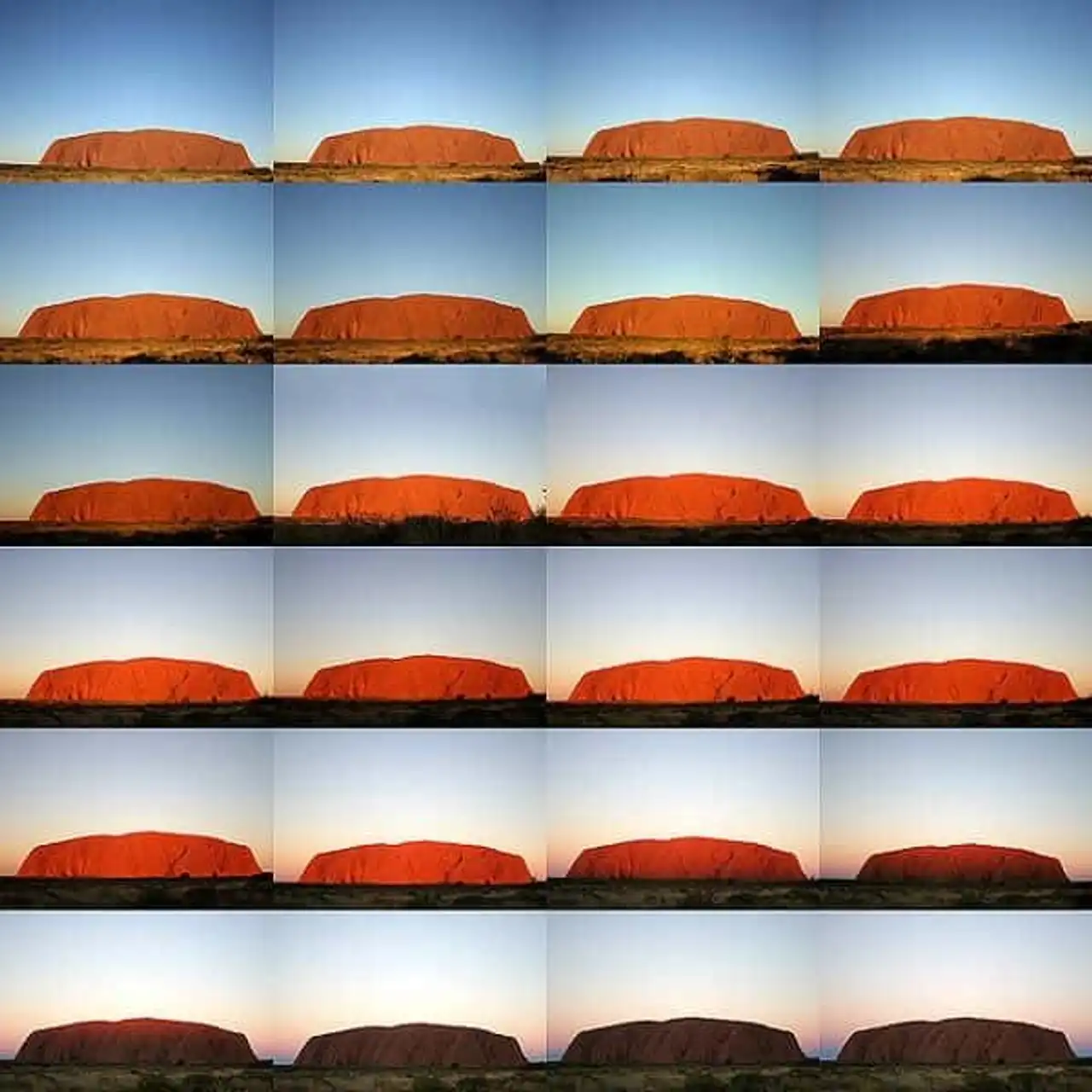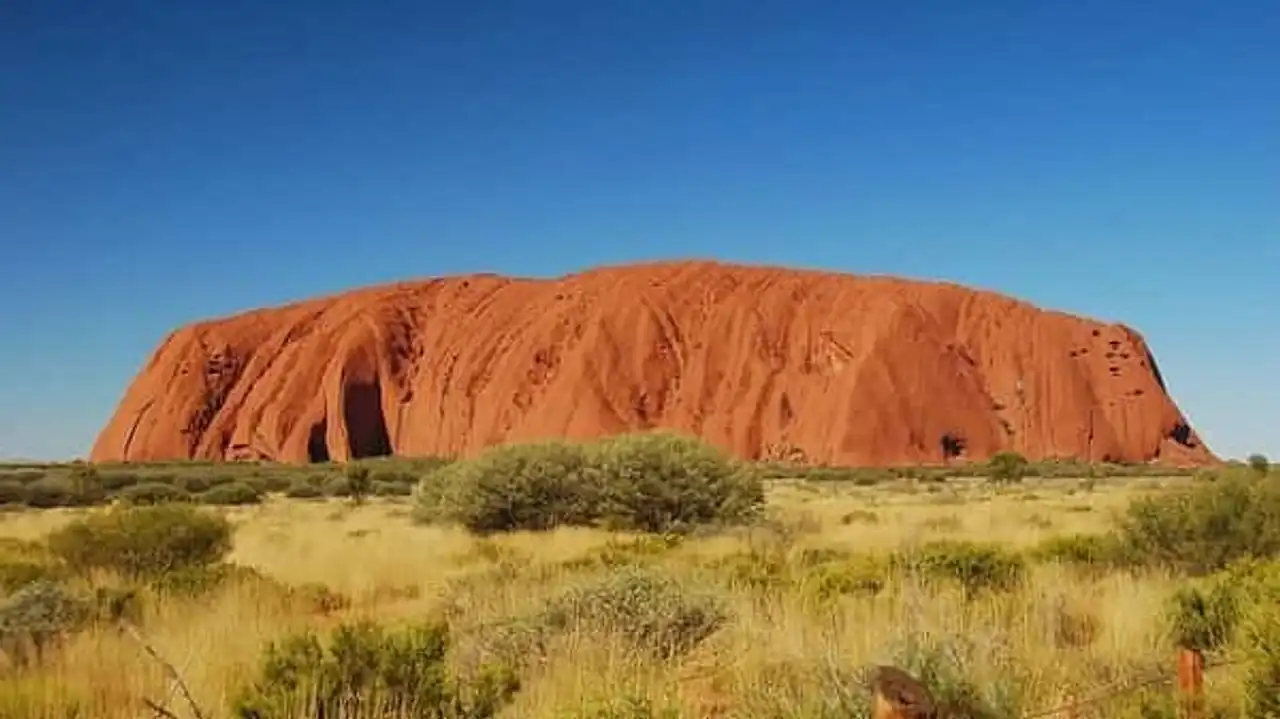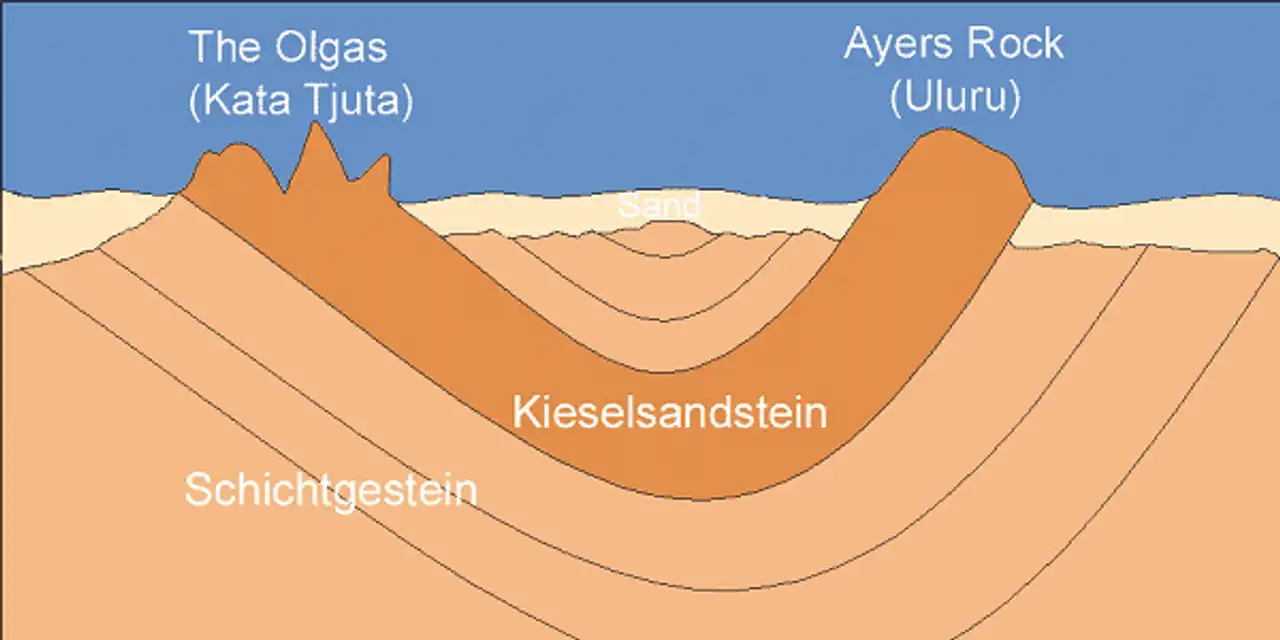Things to know before visiting the Ayers Rock
Perhaps the most famous icon of the Australia , the giant monolith Uluru/Ayers Rock is located in the center of the mainland. Here are 40 facts and anecdotes you need to know before visiting this mythical rock. Between legends and traditions, this site is filled with secrets.
Also read: Where to sleep near Uluru – Ayers Rock?
The names
1. Ayers Rock is the most commonly used name, especially outside Australia. 2. Uluru is the Aboriginal and official name. 3. Uluru does not mean “water point”, as you might have read. It is simply the name of an aborigine place referring to both the rock itself and the water point that lies above it. 4. Kata Tjuta (the other rock formation in the national park) has a translation. This literally means "a lot of heads." 5. The English name commonly used for Kata Tjuta is "The Olgas" or "Mt. Olga". 6. Uluru’s Aboriginal owners are named Anangu, and ask what they are called. They are often referred to as the "Yankunytjatjara" and "Petjantjatjara". Both are actually the two languages spoken by the Anangu. 7. Yulara is the name of Ayers Rock Resort just outside the park. The name means "weep" or "weep." (The bad languages say that this is what tourists do when they see their invoice...).
Location and size
8. The Ayers Rock is located in the middle of Australia, in reality very close to the real geographic center. 9. The Ayers Rock is no bigger monolith in the world. This title belongs to Mont Augustus in Western Australia.

Flickr – Sha Sha Chu
10. Uluru is 862.5 meters above sea level, it measures 348 meters high, 3.6 km long, 1.9 km wide, 9.4 km long around the base, it covers 3.33 km2 , and extends for several kilometers in the ground, but we do not know exactly what depth. 11. The climbing track (which transgresses a significant Aboriginal sacred place) is 1.6 km long. 12. The Uluru-Kata Tjuta National Park represents 1326 km2 in size. 13. The Ayers Rock Resort (Yulara) is 443 km from Alice Springs by road, or 45 minutes by air. (From the resort, you still have to travel 8 km to reach the entrance of the Uluru-Kata Tjuta National Park, and 10 km to the Ayers Rock.)
Weather and climate
14. Uluru-Kata Tjuta National Park has a desert climate. 15. The region receives a surprising amount of precipitation for a desert (like most Australian deserts have), about 200 to 250 mm a year. In heavy rains, it produces a very rare phenomenon on Uluru . 16. Like all deserts, the region is experiencing extreme temperatures. Winter nights can go down to -8°C, and the summer days go up to 48°C. 17. During the mid-summer (December to March), the maximum daily averages are 38°C.
Geology
18. Uluru and the Kata Tjuta are the remains of a huge sediment that was formed hundreds of millions of years before. 19. Sand was deposited in a basin that formed about 900 million years ago. It continued to deposit at the bottom of this former seabed, until about 300 million years ago. 20. 550 million years ago mountain ranges formed. This chain eroded during the millions of years that followed, leaving large sediments on the ground. 21. About 300 million years ago, the waters disappeared. The remaining sediments have folded and broken again. In this major process the sediment layers that now form Uluru were inclined, so today they are at an angle of 85 degrees. Kata Tjuta was inclined to about 20 degrees. The entire region was raised above sea level in this process. 22. This means that Uluru and Kata Tjuta are the only visible points of a massive underground rocky slab. 23. It could even be claimed that Uluru's description as a monolith is inaccurate, because it is in fact part of this immense underground rock formation that also includes Kata Tjuta.

Flickr – Paolo Rosa
History
24. Research suggests that Aboriginal people lived in the region for at least 10,000 years. 25. The first white race person to see the Ayers Rock, at least from a distance, was explorer Ernest Giles in October 1872. 26. The first European to actually visit the rock was the William Gosse geometer on July 19, 1873. He called him Ayers Rock for Sir Henry Ayers , the chief secretary of South Australia at the time. (At the time, the region was part of South Australia.) 27. William Gosse was also the first European to climb the Ayers Rock. 28. In 1950, the Ayers Rock was named “national park”. 29. According to some sources, in 1983, Bob Hawke, then Prime Minister of Australia, promised that the escalation of Uluru would be prohibited. 30. He broke his promise in 1985. The lands were handed over to its traditional owners, the Anangu, on October 26, according to the conditions that they lease the park to the Australian National Parks for 99 years, that it would be managed jointly, and that Uluru remains open to the climbers. 31. In 1995, the name of the park changed. From “Ayers Rock – Mont Olga National Park”, he became “Uluru-Kata Tjuta National Park”, reflecting the traditional property and the close relationship of the Anangu with their lands.
Tourism
32. Between 400,000 and half a million people visit the Ayers Rock every year. 33. About one in ten visitors climb the Ayers Rock.

Here’s how Uluru is placed in the ground
34. A large number of people died due mainly to heart failure, but some slipped and fell. About forty people have died since the tourists tried to get there. 35. The Cultural Center and guided hikes Anangu around Uluru and Kata Tjuta will give you a much better understanding and experience than climbing (it is either climbing or visiting). 36. The only accommodation near Uluru is the Yulara Resort just outside the park. Yulara proposes different levels of accommodation , from luxury to economic, as well as a caravan park. 37. To enter the park, you must buy a package. The cost is $25 AUD per person over the age of 16, and the card is valid for three days. 38. Alcohol is now prohibited on all Aboriginal lands in the Northern Territory. This includes of course the Uluru-Kata Tjuta National Park. The only exception are for tour operator. So, if you want to enjoy a glass of wine or champagne with the sunset Ayers Rock, you must reach the masses of tourists. 39. Some parts around Uluru are forbidden to photos and cameras. You will have to refrain from taking photos at certain times. 40. In the museum that follows the walk around the rock, you can see an apology book ("sorious book") on which you find letters of excuses from people who have returned by mail from the stones stolen on the site. There is also a book to indicate “I did not escaladé Uluru”.







Loading comments ...